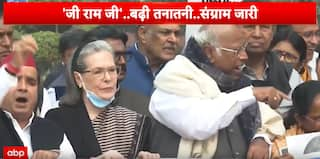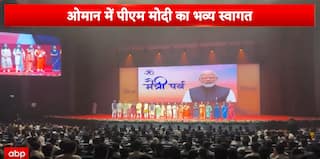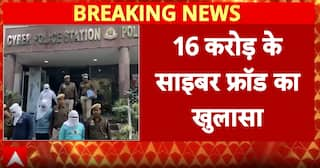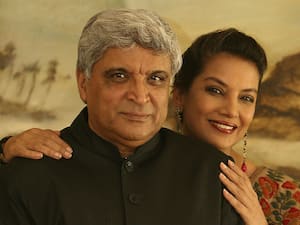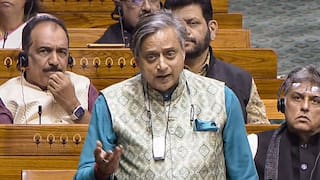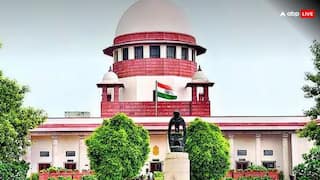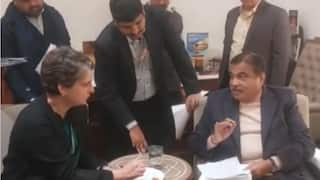Explorer
Judges Are Service Providers, Enablers Of Rights-Affirming Societies: CJI Chandrachud At J20 Summit In Brazil
CJI Chandrachud said that Indian Supreme Court's Case Management System has been developed on Free and Open Source Software (FOSS), and is the largest case management system in the world.

CJI Chnadrachud said that virtual hearings have democratised access to the Supreme Court.
Source : PTI
The Chief Justice of India (CJI) while addressing the J20 Summit at Brazil said that judges are neither princes nor sovereigns who are above the explainability requirement. He said judges are service providers, and enablers of rights-affirming societies. Emphasising the need for transparency, inclusivity and use of technology to enhance judicial efficiency, the CJI said that our courts have come to be reimagined not as imposing ‘empires’, but as democratic spaces of discourse.
Speaking at the J20 summit, CJI said that technology has re-negotiated our relationship with the law and the institutions that enforce it.
He said that Judges are after all perhaps the only public functionaries who are perched on a raised platform, who punish for contempt, and make important decisions about the lives of others in discrete private chambers, without the fear of electoral losses. As judges, we are neither princes nor sovereigns who are above the explainability requirement ourselves. We are service providers, and enablers of rights-affirming societies. The decision itself and the road leading up to it, must be transparent, understandable to everyone with or without a legal education and must be broad enough for everyone to walk alongside," CJI said.
"We are now having conversations about the explainability of the Artificial Intelligence decision-making mechanism- which means that AI cannot decide in a black box and there must be an explanation of why it decided the way it did."
The CJI explained that there are two crucial areas in which digitisation and technology can help create better justice delivery mechanisms. "One is streamlining of the pre-decision processes and the other is the post-decision measures that improve access to and engagement with the decision itself. Courts across jurisdictions are using technologies ranging from basic organisation, to sophisticated artificial intelligence and machine learning tools."
Supreme Court's Case Management System Largest In World
Speaking on the achievements of Indian courts in the realm of technology and digital transformation, the CJI said that the Indian Supreme Court's Case Management System has been developed on Free and Open Source Software (FOSS), and is the largest case management system in the world.
"Indian Courts’ tryst with information technology advancements began in 2007 with the e-Courts project- a country-wide project for improving judicial efficiency and creating citizen-centric justice-delivery services. The front-desk experience of approaching courts has changed completely. We now have the facility of filing cases at the click of a button through our e-filing platform. Over 150 thousand e-filings have been done so far just at the Supreme Court, with a consistent rise in the share of e-filings compared to physical filings. For context, the Indian Supreme Court exercises a wide jurisdiction and acts as both a constitutional court and an appellate court, hearing appeals from the twenty-five high courts and various tribunals across the country."
CJI explained that FOSS helps the judiciary to cut costs significantly, and provides greater transparency, as opposed to proprietary or closed source software. "It bridges an important communication gap and allows litigants to keep a daily check on case status- it sends automated emails to litigants with case details, hearing dates, judgments and orders. We also have offline e-kiosks which assist litigants navigate the systems and supply case status information."
Virtual Hearings Have Democratised Access To The Supreme Court
The CJI said that even after the pandemic, hybrid hearings continue to be a feature of our courts and said that virtual hearings have democratised access to the Supreme Court.
"It has opened the space for people who could not appear before the Court without great difficulty. Persons with physical impairments, pregnant women, persons in their advanced years can now choose to opt to access the courtroom virtually. Over 750,000 cases have been heard over video conferencing. He further said that the proceedings of important constitutional cases in the Supreme Court are live-streamed on its YouTube channel - bringing constitutional deliberations to the homes and hearts of all citizens. The Supreme Court of India today is almost entirely paperless, with digitised and optical character recognition (OCR)- enabled paper-books.
"We are also attempting to reduce the need for litigants’ physical presence in court for adjudication of their disputes. On a pilot basis, we are using artificial intelligence for traffic fine cases- which are high volume, repetitive, and relatively uncomplicated cases. This is similar to the Mexican ‘Experitus’ - an Artificial Intelligence tool that analyses past claims to decide who is entitled to social security."
The CJI further said that the Supreme Court monitors judicial data of the entire country in real time by using the National Judicial Data Grid (NJDG) and iJuris - information sharing platforms for the district-level judiciary. They track real-time data on pending and disposed cases and monitor vacancies and infrastructure. The NJDG, a repository of nation-wide judicial data about 3000-odd district courts, the High Courts, and the Supreme Court is now a click away.
"Once the decision is delivered, it must be swiftly uploaded on the courts’ website for the parties to execute it or explore further remedies. Time is of essence in some cases more than others. An order granting bail to an undertrial ought to reach them in time for the ‘right to liberty’ to materialise. The interoperable criminal justice system (ICJS) is an initiative of the Supreme Court to enable transfer of information among the police, courts, jails and forensic laboratories. The PDPJ modules of the Supreme Federal Court of Brazil have been a pathbreaker in technology adoption in justice delivery."
Correct And Accessible Information Is An Antidote To Disinformation
The CJI said that the complexity of procedures and inaccessibility impact not only the litigants but also those not before the courts directly, and overall hurts timely resolution. Courts perform a “shadow function” – they create guidelines for society. Communication between courts and everyone else becomes central to not only the outcomes in individual cases but for the discursive health of the institution, through critical engagement with its decisions.
"We believe that sunshine is the best disinfectant, and that correct and accessible information is an antidote to disinformation. The Brazil Supreme Court’s Program to Fight Disinformation targets disinformation by enabling access to the judgments and creating an ecosystem of stakeholders. In India, it is quite common for judges to engage with a bar and play the devil’s advocate, in order to extract their best response. However, this is sometimes mistaken as the opinion of the bench and misleading clips of the proceedings are circulated on the internet. Fortunately, we have a robust network of legal journalists who live-report the proceedings and help dispel disinformation. We are using SUVAS (Supreme Court Vidhik Anuvaad Software)- a machine learning, AI-enabled translation tool for our judgments of 16 regional languages."
He said that over 36,000 cases have thus far been translated. There is also live streaming and YouTube recordings of important constitutional cases that provide the complete context. Easy access to the judgments of the Supreme Court is provided for through Digital SCR (Supreme Court Records), where over 30,000 old judgements are available for free.
"Our courts have come to be reimagined not as imposing ‘empires’, but as democratic spaces of discourse. COVID-19 pushed the frontiers of our court systems- which were compelled to change overnight. Courts became more than just opaque physical spaces. Digital divide, representational asymmetry between parties to the same dispute, and low-connectivity locations are some of the other bottlenecks that we must tackle. When we speak of judicial efficiency, we must look beyond the efficiency of the judge and think of a holistic judicial process."
Follow Breaking News on ABP Live for more latest stories and trending topics. Watch breaking news and top headlines online on ABP News LIVE TV
Read more











